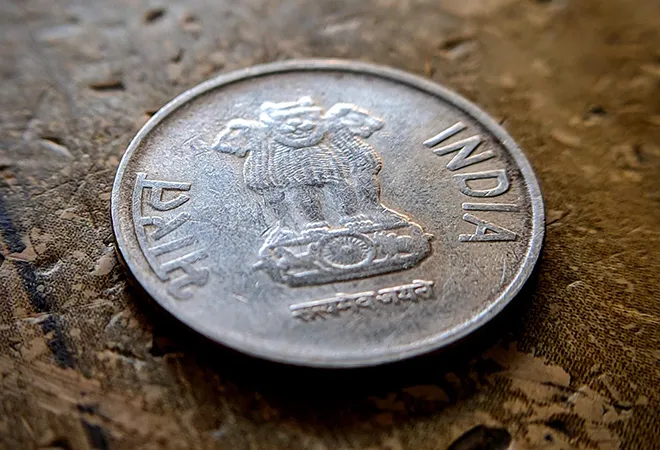
The outburst of angst against the Chinese establishment given increased tensions on the LAC in Ladakh has come out in different forms, one among them being the “wallet response to their bullet,” which directly targets the Chinese economy. Well known education reformist Sonam Wangchuk has led this movement from the front urging people of India to boycott Chinese software in a week and hardware in a year. Many nationalist groups have also come forward to lend support to this movement and vouched for the boycott of “Made in China” products. However, the question that prevails is, can India afford to boycott Chinese products given the circumstances? This article attempts to put forth alternatives that could better our fight against China’s economic monopoly and envisage a plausible route to the “Atmanirbhar Bharat” in the long-term.
Let’s put the India-China trade into numbers to augment our understanding of the issue.
- As of today, China exports around 70 billion dollars of goods and services to India which accounts for a mere three percent of their exports and 14 percent of our imports. Many crucial sectors such as telecom equipment, smartphones, pharma/API, solar, textile and auto accessories are dependent on China for their finished products.
- Two-third of Indian unicorn startups have had huge investments made by Chinese venture funds. Reportedly, Chinese technology investors have invested around $4 billion into 18 Indian unicorns’ startups.
- China serves as the third largest exporting market for India as it imports $16 billion dollars’ worth of goods from India.
- The trade relation between India and China is extremely lopsided, and the deficit has grown 60 times over the last 20 years from $1 billion in 2000 to $60 billion in 2020.
The above figures suggest India is highly dependent on China for various products and cannot afford to boycott Chinese products or investments immediately or completely. Moreover, if China retaliates and decides to boycott Indian goods, 67 percent of the drug imports and 60 percent of electronic imports will get affected which could arguably lead to loss of lives along with livelihoods. These numbers portray an India-China trade which is heavily skewed in Beijing's favour. Therefore, engaging in a trade face-off with China given India’s manufacturing capacities at the moment won’t be an idea worth much consideration.
The aim of the government and aspiration of the public should be directed towards developing our domestic industries and competing naturally.
The clamour to boycott Chinese products and substitute it with Made in India products is overly optimistic in the short-term. Rather the aim of the government and aspiration of the public should be directed towards developing our domestic industries and competing naturally. As these industries mature, it will by design lead to a reduction in imports. This approach will reap better results as it will give our products a global competitive advantage and we could be the supplier to the world rather than just focusing on China.
To start with though, the government can make serious efforts to diversify imports and cautiously disengage with China. Sectors such as pharma and automobiles which comprise a large chunk of Chinese investments in India should get priority. Attention towards boosting FDI in manufacturing should be at the forefront of the government's “Atmanirbhar Bharat” agenda. Post the pandemic, India was trying to lure more than 1,000 companies planning to shift out of China, but of that, only a few seem to have bought into our offer. Most of these companies either shifted to Thailand, Vietnam or Malaysia.
Amidst all this, one has to acknowledge China’s trade acumen. China in the year 1978 exported goods worth just $10 billion dollars constituting less than 1 percent of the world trade. In 1985, the exports grew to $25 billion and by the next two decades the revenue from exports jumped to a whopping $4.3 trillion, making it world largest trading nation in goods. For years since then China has pushed the global growth, still constituting almost 35% of the global GDP, despite its recent slowdown. China also has its ambitious plans already in place to tackle the recent slowdown before it hits them hard. The next chapter of China’s economic growth is expected to be driven by the global infrastructure project, the Belt and Road Initiative, which aims to connect half the world’s population and one fifth of the global GDP, and thus opening up new trade and investment links that is expected to fuel the next phase of China’s growth. Beijing has time and again managed to introduce landmark market reforms and policies that have opened up new trade routes and brought in investments. China still lies far ahead of India in global parameters such as ease of doing business, global competitiveness index, global innovation index and so on despite modest gains made by India recently. This is perhaps the single biggest challenge for India, that of bring in an environment that thrives on competitive industrial growth.
China still lies far ahead of India in global parameters such as ease of doing business, global competitiveness index, global innovation index and so on despite modest gains made by India recently.
Government agencies like “Startup India” and “Invest India” should take larger responsibility in funding promising startups in the country. The Indian startup ecosystem has continuously been thriving on innovative ideas, but there seems to be lack of adequate funding to fuel these ecosystems beyond just the ‘startup’ phase. Developing ease of access to capital should become India’s main clarion call.
These initiatives driven by ground-level policy interventions can help India healthily navigate global competition, especially from China, in the long run to become self-reliant. Therefore, it’s high time government agencies should take a step back and introspect on why the last six years of “Make in India” have not been able to draw enough FDI in the manufacturing sector of the country. Though our rankings in the ‘Ease of Doing Business’ have seen an incremental rise, we still perform very poorly in parameters such as ‘enforcement of contracts’ and ‘registering property,’ ranked 163rd and 154th globally respectively. Policy shortcomings have resulted in lack of proper implementation of ease of doing business at state and local levels consistently. Moving forward, industry consultations with regard to framing rules governing personal data protection, e-commerce guidelines, and data localisation will be crucial in creating an environment that will be conducive to bringing in further foreign investments. India does not need to become China, but should thrive to become the premier democratic alternative to Beijing.
The views expressed above belong to the author(s). ORF research and analyses now available on Telegram! Click here to access our curated content — blogs, longforms and interviews.




 PREV
PREV


